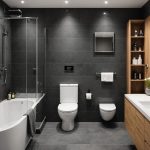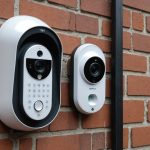Struggling with high electricity bills? LED lighting offers a simple yet effective solution. By switching to energy-efficient LEDs, you can significantly reduce your energy costs while enjoying better lighting quality. Not only do these bulbs have a longer lifespan, but their lower energy consumption means direct savings on your monthly bills. Learn how LED technology transforms your home’s energy use and explore practical tips for making the switch. Start your journey toward substantial savings today!
Overview of LED Lighting Benefits
LED lighting has become increasingly popular due to its numerous advantages, particularly in terms of energy efficiency and cost savings. These lights consume significantly less energy compared to traditional lighting options, such as incandescent and fluorescent bulbs. This efficiency translates into lower electricity bills, offering substantial cost savings over time.
Sujet a lire : Transform Your Glasgow Backyard: Mastering Stormwater Management with Rain Gardens
One of the standout features of LED lights is their longevity. LEDs last much longer than traditional bulbs, reducing the need for frequent replacements. This not only saves money but also reduces waste, contributing to environmental sustainability.
When comparing LED lighting to traditional options, the benefits become even clearer. Traditional incandescent bulbs convert only about 10% of the energy they consume into light, wasting the rest as heat. In contrast, LEDs are designed to use energy more effectively, with a higher percentage being converted into light. This makes them an ideal choice for those looking to reduce their carbon footprint.
En parallèle : Transform Your Compact UK Bathroom: Design Tips to Create an Illusion of Space
Moreover, LED lights are free from harmful substances like mercury, which is often found in fluorescent lights. This makes them safer for both the environment and human health. By choosing LED lighting, individuals and businesses can enjoy a combination of energy efficiency, cost savings, and environmental benefits, making it a smart and sustainable choice.
Financial Savings through LED Lighting
Switching to LED lighting can lead to significant financial savings over time. One of the most compelling aspects is the reduction in electricity bills. According to cost-saving statistics, LEDs use approximately 75% less energy than incandescent bulbs, translating to substantial savings. For instance, if a household spends £200 annually on lighting, switching to LEDs could reduce this by £150, resulting in a yearly expenditure of just £50.
Another important consideration is the return on investment (ROI) when transitioning to LED lighting. Although the initial purchase price of LEDs may be higher than traditional bulbs, the long-term savings outweigh the upfront costs. Typically, the ROI can be observed within a year or two, depending on usage and electricity rates. This swift payback period is due to the lower energy consumption and reduced frequency of replacements.
In addition to immediate savings, the long-term financial benefits are noteworthy. Over a decade, the cumulative savings from reduced electricity bills and maintenance costs can amount to hundreds or even thousands of pounds. Therefore, investing in LED lighting is a financially prudent decision, offering both immediate and enduring economic advantages. By choosing LEDs, individuals and businesses not only lower costs but also contribute to a more sustainable future.
Practical Implementation Techniques
When considering LED installation in your home, a well-planned approach is essential. Start by assessing the areas where you want to upgrade your lighting. Kitchens, living rooms, and outdoor spaces often benefit the most from LED upgrades due to their high usage.
Step-by-Step Guide for Installation
-
Identify Lighting Needs: Determine the purpose of each space. For instance, task lighting in kitchens or ambient lighting in living rooms.
-
Select Appropriate LED Bulbs: Choose bulbs with the right brightness and colour temperature for each area. Warm whites are ideal for living rooms, while cooler whites work well in kitchens.
-
Plan the Layout: Design your lighting layout to ensure even light distribution. Consider using a mix of ceiling lights, wall sconces, and floor lamps for layered lighting effects.
- Installation: Follow manufacturer's instructions carefully. Ensure all electrical connections are secure and compliant with local regulations.
Retrofitting Existing Spaces
When retrofitting, consider the existing fixtures. Many LEDs are designed to fit traditional sockets, making the process straightforward. However, for a home improvement project that involves more extensive changes, such as recessed lighting, professional help may be advisable.
By thoughtfully planning and executing your LED installation, you can enhance your home's energy efficiency and aesthetics.
Government Incentives and Rebates
The adoption of LED lighting in the UK is further encouraged by various government incentives and energy efficiency grants. These programs are designed to ease the transition to more sustainable lighting solutions and make them more accessible to households and businesses.
Overview of Available Government Programs
Numerous UK government incentives support LED adoption. Among them are the Energy Company Obligation (ECO) scheme and the Green Homes Grant. These initiatives provide financial support to improve energy efficiency, reducing the initial cost burden of switching to LEDs.
Application Process for Energy Efficiency Grants and Rebates
Applying for energy efficiency grants and rebates can be straightforward. Typically, applicants need to demonstrate their current energy usage and propose how switching to LEDs will enhance their energy efficiency. Documentation and a detailed plan may be necessary, but the process is designed to be user-friendly to encourage widespread participation.
Impact of Incentives on Overall Cost Savings
Government incentives significantly impact overall cost savings by reducing the upfront expense of LED installations. This financial relief, combined with the long-term savings from reduced energy consumption, makes LEDs an even more attractive option. By leveraging these incentives, individuals and businesses can enjoy substantial economic benefits while contributing to environmental sustainability.
Comparing LED Lighting with Traditional Lighting
LED lighting stands out when compared to incandescent lighting and fluorescent lighting due to its superior energy efficiency and longevity. Incandescent bulbs, for instance, are known for converting only about 10% of the energy they consume into light, with the rest wasted as heat. In contrast, LEDs are designed to utilise energy more effectively, converting a higher percentage of energy into light. This results in substantial energy savings over time.
Fluorescent lighting offers better efficiency than incandescent options but still falls short of LED performance. Fluorescent bulbs contain mercury, posing environmental and health risks if not disposed of properly. LEDs, on the other hand, do not contain harmful substances, making them a safer choice.
When considering long-term performance, LEDs outshine traditional options. They have a significantly longer lifespan, reducing the frequency of replacements and maintenance efforts. This longevity not only saves money but also minimises waste, contributing to environmental sustainability.
In terms of maintenance, LEDs require less attention. Incandescent and fluorescent bulbs often need frequent replacements due to their shorter lifespans. By choosing LEDs, individuals and businesses can enjoy reduced maintenance costs and effort, alongside the benefits of enhanced energy efficiency.
Case Studies and Testimonials
Exploring real-life success stories of LED lighting implementations provides valuable insights into the tangible benefits experienced by users. These energy transformations highlight significant improvements in efficiency and cost savings.
Real-Life Examples of Successful LED Implementations
A notable example is a UK-based retail chain that transitioned to LED lighting across its outlets. This move resulted in a 60% reduction in energy costs, showcasing the substantial savings possible with LEDs. The chain reported a swift return on investment, with the initial costs recouped within two years.
User Experiences and Testimonials
Homeowners also share positive experiences with LED lighting. One family in Manchester noted a dramatic drop in their electricity bills after switching to LEDs, achieving a 70% energy reduction. They appreciated the longevity of the bulbs, reducing the hassle of frequent replacements.
Statistical Analysis of Energy Savings
Statistical analyses from various case studies consistently demonstrate the efficiency of LED lighting. On average, users report energy savings ranging from 50% to 75% compared to traditional lighting options. These statistics underscore the effectiveness of LEDs in reducing energy consumption and costs.
By examining these user experiences and case studies, the benefits of LED lighting become clear, affirming its role in promoting sustainable energy use.
Future of LED Lighting Technology
The future of LED lighting technology is set to revolutionise how we illuminate our spaces, with innovative lighting solutions leading the charge. Emerging trends indicate a significant shift towards smart lighting, which integrates LED technology with the Internet of Things (IoT). This allows for automated control, customisable settings, and energy optimisation, enhancing both convenience and efficiency.
Smart lighting systems can adjust brightness and colour based on the time of day or user preferences, offering tailored lighting experiences. This adaptability not only improves user comfort but also maximises energy savings, furthering the sustainability of LED options.
As technology advances, the potential for energy savings becomes even more pronounced. The integration of sensors and AI in smart lighting systems could lead to unprecedented reductions in energy consumption, making them a cornerstone of sustainable living.
In the UK market, predictions suggest a growing demand for these trends in lighting solutions. As consumers become more environmentally conscious, the adoption of smart and energy-efficient lighting is expected to rise. This evolution will likely see LEDs becoming the standard in both residential and commercial settings, driven by their adaptability, efficiency, and contribution to a greener future.












